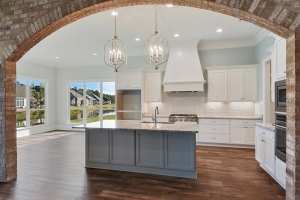If you want to own a home but haven’t decided whether to build a house or buy one, there are several things to consider. If you love a custom look with features and finishes that are in your taste, then building a custom home would be for you, but if you like historic charm and an older established neighborhood then purchasing a resale is right for you. If your budget is a factor, what is cheaper: building a home or buying an existing one? The National Association of Home Builders and the US Census Bureau reports that the median cost to purchase a home is $410,600 and is less by $28,800 than building a home.

Pros and cons: Building a house
According to the professionals in the industry a basic home can be built for around $150 per square foot. This is for a basic home, but this price can jump up to over $500 per square foot if you want the best of the best. When you build a home you get to choose what you want such as an eat-in kitchen. A new home also has less long-term expenses than an older home. A new home will be more energy-efficient and will have lower utility bills. There are also less repairs and lower maintenance costs.
On the other hand, a new construction home will take longer to get into. Especially nowadays with labor shortages and shipping difficulties. According to the US Census Bureau it takes around 6-8 months to build a new construction home. You will also have an alternative place to live while your home is being built which is an added expense. Since there is a shortage of home inventory, demand is up and the cost of building is higher. The US Census Bureau reports that new construction home costs have risen $84,700 over the same time last year.
Pros and cons: Buying a house
Most of the time, there are fewer construction costs when purchasing an existing home. The only time this will not be the case is when you purchase a fixer-upper. When you purchase a home, the transaction time is also a lot quicker. This would be the best option if you need to relocate or have a short time frame. If location is important, purchasing an existing home will be much easier than finding a lot to build on.
You do not have to build to get an all-new home. You can opt to purchase a new construction home that is completed and listed for sale. You will still have all new everything without the hassle of building a home yourself.
If you are in the market for a new home, find a local realtor who can help you with your purchase of a newly built home, custom-built home or an existing home. A realtor can help you determine which is best for you and your lifestyle. They can also help you with financing options and refer you to a lender.